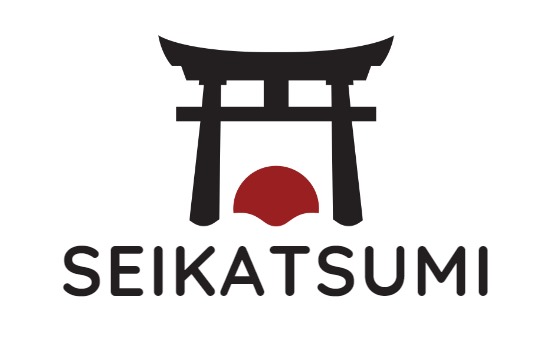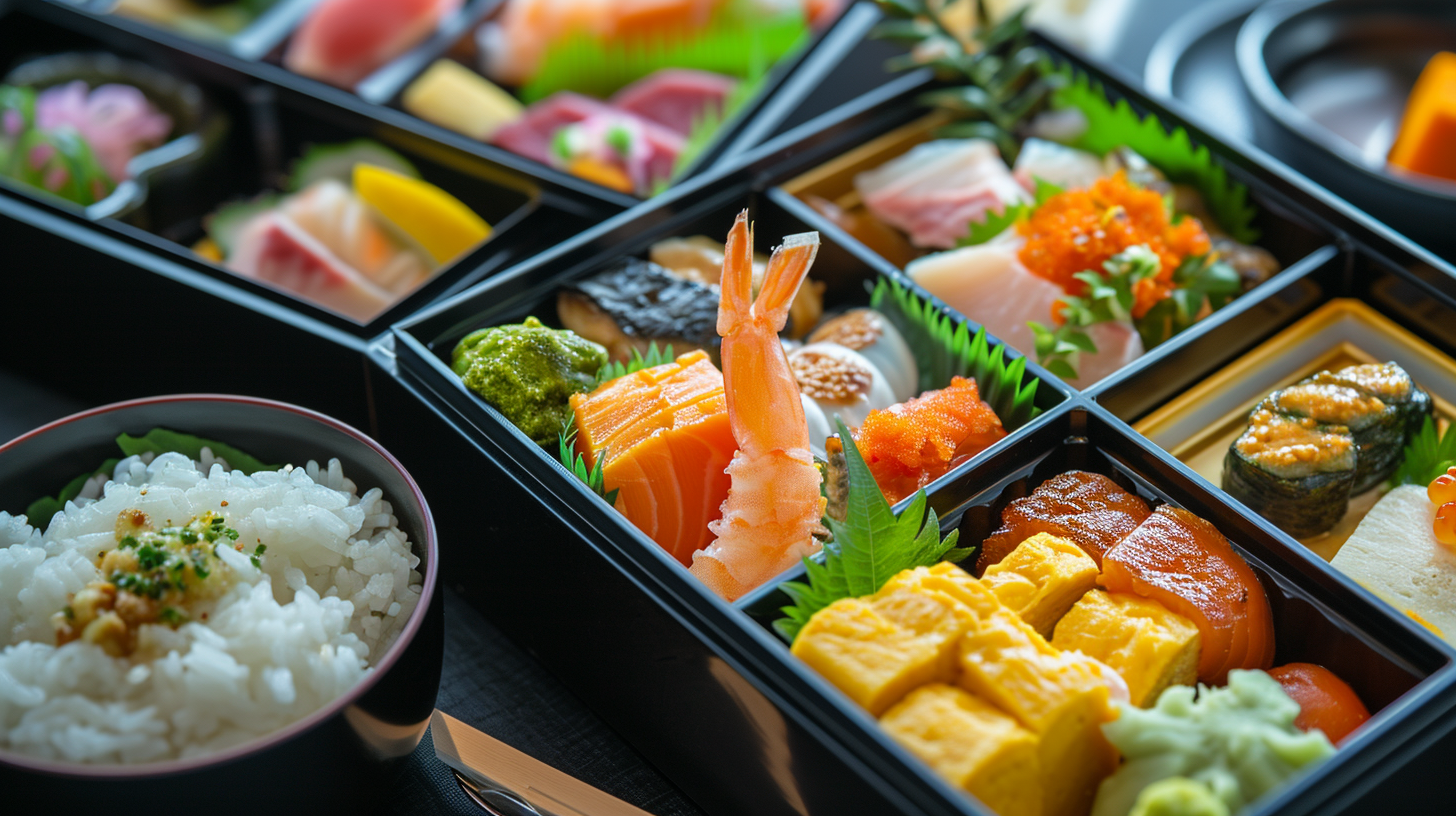Are you looking for a fun and unique way to pack your lunch? Look no further than the Japanese bento box! These traditional lunch boxes have been a staple in Japanese culture for centuries and are now gaining popularity around the world.
A bento box typically consists of a main dish, such as rice or noodles, along with several side dishes such as vegetables, meat, or fish. The food is arranged in a visually appealing way and often includes cute shapes or designs. The result is not only a delicious meal but also a work of art!
We were wondering how best to prepare these great bento boxes and have created a guide for you so that you can create boxes just as great as the ones in the pictures we have picked out for you!
You’re not interested in the details and ingredients of the bento boxes? Then click here and jump straight to our guide!
Japanese Bento Box: History of Bento
Bento is a Japanese lunchbox that has been a popular choice for meals on-the-go for centuries. In this section, we will explore the origins of bento, how it has evolved over time, and its significance in modern Japanese culture.
Origins in Japan

Bento originated in Japan during the Kamakura period (1185-1333) when dried rice was eaten as a snack. The modern bento can trace its roots back to the Azuchi-Momoyama period (1573-1603), when wooden lacquered boxes were used for holding food. These bento boxes were typically eaten during hanami (cherry blossom viewing) or at outdoor tea ceremonies.
Evolution Over Time
As Japan modernized, so did bento boxes. During the Meiji period (1868-1912), the use of metal bento boxes became popular. In the 1920s, the bento box became a common item in Japanese train stations, as people would bring them on long train rides. During World War II, bento boxes were used to provide meals for soldiers.
Bento in Modern Culture
Today, bento boxes are still a popular choice for meals on-the-go in Japan. They are often sold in convenience stores and train stations, and can be customized with a variety of foods such as rice, vegetables, meat, and fish. Bento boxes are also popular among school children, who bring them to school for lunch. In recent years, bento boxes have gained popularity outside of Japan, with many restaurants and food trucks offering their own take on the traditional Japanese lunchbox.
Bento Box Contents

When it comes to Japanese Bento Box, the contents are just as important as the box itself. A traditional bento box usually contains a well-balanced meal that includes rice, proteins, vegetables, and pickles or condiments. Let’s take a closer look at each of these components.
Rice and Grains
Rice is the staple food in Japan, and it’s no surprise that it’s the main component of a bento box. The rice is usually cooked with a little bit of salt and sometimes mixed with other grains like barley, millet, or quinoa to add extra flavor and texture.
Proteins
Proteins are an essential component of a bento box, and they can come in different forms such as fish, meat, or tofu. Grilled fish like salmon or mackerel is a popular choice, as well as chicken or pork that is marinated and cooked in a sweet and savory sauce. Tofu is also a great option for vegetarians or those who are looking for a lighter protein source.
Vegetables

Vegetables are an important part of a bento box, and they provide a variety of vitamins and minerals. The vegetables can be cooked or raw, and they are often cut into small pieces to fit inside the bento box. Some popular vegetables include carrots, broccoli, spinach, and eggplant.
Pickles and Condiments
Pickles and condiments are used to add extra flavor and texture to the bento box. Pickled vegetables like cucumber, daikon, or ginger are commonly used, as well as soy sauce, wasabi, or mayonnaise for dipping.
Health Aspects of Bento
When it comes to healthy eating, Japanese Bento Box is an excellent option. It is a balanced meal that is designed to provide all the necessary nutrients in one container. Here are some of the health aspects of Bento that make it a great choice for a healthy meal.
Balanced Nutrition in the Bento Box

A typical Bento Box contains a variety of food items, including rice, protein, vegetables, and fruits. This combination provides a balanced mix of carbohydrates, proteins, vitamins, and minerals. The rice in the Bento Box is a good source of carbohydrates, while the protein can come from fish, meat, or tofu. The vegetables and fruits provide essential vitamins and minerals, making the Bento Box a complete meal.
Portion Control and Weight Management
One of the significant health benefits of Bento is portion control. The size of the container limits the amount of food you can eat, making it easier to manage your calorie intake. It is an excellent option for people who are trying to lose weight or maintain a healthy weight. The Bento Box also encourages mindful eating, which means you are more likely to savor each bite and feel satisfied with a smaller portion.
Tips for a Healthy Bento Compilation

To make a healthy Bento Box, it is essential to choose the right ingredients and pay attention to the portion sizes. Here are some tips for a healthy Bento compilation:
- Choose whole grains, such as brown rice or quinoa, for your carbohydrate source.
- Include a variety of vegetables, such as broccoli, carrots, and spinach, to provide essential vitamins and minerals.
- Select lean proteins, such as grilled chicken or fish, to keep the calorie count low.
- Use healthy fats, such as avocado or nuts, in moderation.
- Avoid processed foods, such as fried chicken or potato chips, as they are high in calories and unhealthy fats.
Types of Bento Boxes
If you’re looking to explore the world of Japanese cuisine, then you can’t miss out on the Japanese Bento Box. These boxes are a staple of Japanese culture and come in a variety of styles, each with its own unique features. In this section, we’ll take a look at some of the most popular types of Bento Boxes.
Traditional Bento Boxes

Traditional Bento Boxes are the most common type of Bento Box in Japan. They are typically made with simple designs and are often used for everyday lunches. Traditional Bento Boxes come in a variety of shapes and sizes, but they all have one thing in common: they are made with natural materials like bamboo, wood, or lacquer.
Makunouchi Bento

Makunouchi Bento is a classic type of Bento Box that is often served during special occasions like weddings or ceremonies. This type of Bento Box typically includes rice, fish, meat, and vegetables. The ingredients are often arranged in a visually appealing way, making it not only delicious but also aesthetically pleasing.
Kyō-Bento

Kyō-Bento is a type of Bento Box that originated in Kyoto. It is known for its elaborate designs and intricate details. Kyō-Bento is often made with seasonal ingredients and is meant to be a feast for both the eyes and the stomach.
Modern Interpretations
As Japanese cuisine has become more popular around the world, chefs have started to put their own spin on the traditional Bento Box. Here are two popular modern interpretations of the Bento Box.
Ekiben (Train Bento)

Ekiben, or Train Bento, is a type of Bento Box that is sold at train stations throughout Japan. These Bento Boxes often include local specialties and are meant to be eaten on long train rides.
Charaben (Colorful, Decorative Bento)

Charaben, or Character Bento, is a type of Bento Box that is designed to look like popular characters from anime, manga, or video games. These Bento Boxes are often made with rice, vegetables, and meat that are shaped and arranged to look like the character.
Here are a few examples of funny bento boxes:
Our Guide to Preparing a Japanese Bento Box

If you’re looking for a delicious and healthy lunch option, a Japanese Bento Box is a great choice. Not only are they easy to make, but they’re also extremely versatile. In this guide, we’ll show you how to prepare a Japanese Bento Box that’s both delicious and visually appealing.
1.) Planning Your Bento Box
Before you start preparing your Bento Box, it’s important to plan what you’ll be including. A typical Bento Box consists of rice, protein, and vegetables. You can also include fruit or a small dessert. However, it’s important to keep in mind that the Bento Box should be nutritionally balanced.
To ensure that your Bento Box is nutritionally balanced, try to include a variety of colors and textures. For example, you could include green vegetables, orange carrots, and red tomatoes. You could also include different types of protein, such as chicken, fish, or tofu.
2.) Preparation and Cooking
Once you’ve planned what you’ll be including in your Bento Box, it’s time to start preparing and cooking. You’ll want to start by cooking your rice. While the rice is cooking, you can prepare your protein and vegetables.
When preparing your protein and vegetables, it’s important to keep in mind the size of your Bento Box. You’ll want to cut your protein and vegetables into small pieces that will fit easily into the compartments of your Bento Box.
3.) Aesthetics and Arrangement
When it comes to a Japanese Bento Box, aesthetics are just as important as taste. You’ll want to arrange your food in a visually appealing way. This could include arranging your food in a pattern or using different colors to create contrast.
To make your Bento Box even more visually appealing, you could use small cookie cutters to cut your food into fun shapes. For example, you could use a star-shaped cookie cutter to cut your carrots.
4.) Packing Techniques
Once you’ve prepared your food, it’s time to pack your Bento Box. When packing your Bento Box, it’s important to keep in mind the order in which you’ll be eating your food. You’ll want to pack your food in a way that makes it easy to eat.
To keep your food fresh, you could use a small ice pack or include a piece of lettuce to help absorb any moisture.
Our Tips for Home Preparation

Preparing a Japanese Bento Box at home can be a fun and rewarding experience. To make the process even easier, here are a few tips:
- Use a Bento Box with compartments to make it easy to pack your food.
- Prepare your food the night before to save time in the morning.
- Use leftovers from the previous night’s dinner to save time and reduce waste.
- Experiment with different flavors and textures to keep your Bento Box interesting.
By following these tips, you’ll be able to prepare a delicious and visually appealing Japanese Bento Box that’s perfect for lunch.
Did you like our suggestions and are you interested in more Food? Then maybe these article is something for you:
Bento Box Design
If you’re looking to buy your own Japanese bento box, you’ll be happy to know that there are many different types of designs available to suit your needs. In this section, we’ll explore some of the most important design considerations to keep in mind when choosing a bento box.
Aesthetic Considerations

One of the most important factors to consider when choosing a bento box is its appearance. After all, you’ll be carrying it with you to school or work every day, so you want it to look good! Some bento boxes are decorated with cute characters or patterns, while others are more minimalist in design. Ultimately, the choice is up to you and your personal style.
Compartmentalization
Another important consideration when choosing a bento box is the number and size of compartments it has. Some bento boxes have only one or two compartments, while others have several. The size of the compartments can also vary, so think about what types of foods you’ll be packing in your bento box and choose a design that will accommodate them.
Material and Durability
When choosing a bento box, you’ll also want to consider the materials it’s made from and how durable it is. Many bento boxes are made from plastic or metal, while others are made from natural materials like bamboo or wood. Plastic bento boxes are lightweight and easy to clean, but they may not be as durable as metal or natural material bento boxes. Metal bento boxes are sturdy and long-lasting, but they can be heavy and may not be microwave safe. Natural material bento boxes are eco-friendly and stylish, but they may require more maintenance than plastic or metal bento boxes.
Bento Culture Worldwide
Japanese Bento Box is not just a meal but a cultural phenomenon that has spread across the globe. In this section, we will explore the worldwide influence of bento culture.
Bento in Social Context

In Japan, bento boxes are often associated with schoolchildren and office workers. However, in recent years, bento boxes have gained popularity among people of all ages and backgrounds. Bento boxes are often seen as a way to express creativity and individuality, and they are often shared with friends and loved ones.
International Popularity of Bento
Bento boxes have gained popularity worldwide, with many people embracing the convenience and health benefits of this traditional Japanese meal. In recent years, bento boxes have become a popular lunch option in many countries, including the United States, Canada, and Australia. Many restaurants and cafes now offer bento boxes on their menus, and there are even bento box delivery services that cater to busy professionals.
Bento Box Accessories
As we continue to explore the world of Japanese bento boxes, we cannot ignore the importance of bento box accessories. These accessories not only add visual appeal to your bento box but also make it easier to carry and enjoy your meal. Here are some popular bento box accessories that you can consider adding to your collection.
Chopsticks and Utensils

Chopsticks are an essential part of Japanese culture and cuisine. They are a great addition to your bento box and can be made from a variety of materials such as bamboo, wood, or plastic. You can also consider adding utensils such as a fork and spoon for added convenience.
Sauce Containers
Japanese cuisine is known for its delicious sauces, and bento boxes are no exception. Adding sauce containers to your bento box allows you to pack your favorite sauces without worrying about them spilling or mixing with other foods. These containers come in various sizes and shapes, and you can choose the one that best suits your needs.
Bento Bags and Bands
Bento bags and bands are a great way to carry your bento box and keep it secure. These bags come in various sizes and designs, and you can choose one that matches your style. Bento bands are also a great way to keep your bento box securely closed during transportation.
Buying a Bento Box

When it comes to purchasing a Japanese bento box, there are a few things to consider. In this section, we will cover where to purchase bento boxes, the price range, and how to select the right bento box for your needs.
Where to Purchase
Bento boxes can be found in a variety of places, including online marketplaces, specialty stores, and even some department stores. Some popular online retailers that sell bento boxes include Amazon, Bento&Co, and Walmart. Specialty stores that sell Japanese goods may also carry bento boxes, and department stores may have a small selection in their housewares section.
Price Range
The price of a bento box can vary greatly depending on the material, size, and design. A basic plastic bento box can be found for as little as $5, while a high-end lacquered wood bento box can cost upwards of $100. On average, a good quality bento box can be purchased for around $20-$30.
Selecting the Right Bento
When selecting a bento box, consider the size and shape of the box, the number of compartments, and the material it’s made from. If you plan on using the bento box for hot foods, look for a box that is microwave-safe. If you plan on packing a variety of foods, look for a box with multiple compartments. Some bento boxes also come with utensils and a carrying case.
Frequently Asked Questions
What is a Bento Box, and why is it significant in Japanese culture?
A Bento Box is a traditional Japanese meal with rice, vegetables, proteins, and more, presented in a compartmentalized box. It’s significant for its balanced and aesthetic approach, enjoyed by people of all ages in Japanese culture.
What are the different types of Bento Boxes, and how do they vary?
Types include Makunouchi and Kyō-Bento (traditional) and Ekiben and Charaben (modern). They vary in content and presentation, offering a diverse range based on personal preferences.
Can I make a Bento Box at home, and what are some tips for beginners?
Yes, you can! Tips for beginners: Start with simple recipes, plan for balance, use versatile ingredients, invest in compartmentalized containers, and get creative with shapes and colors. Enjoy the process!
If you liked this blog article about our Guide preparing japanese bento boxes, don’t forget to follow us on Pinterest so you don’t miss any more Bento Box Tips!
Let us know, which of the above ist your absolute favorite Bento Box!












